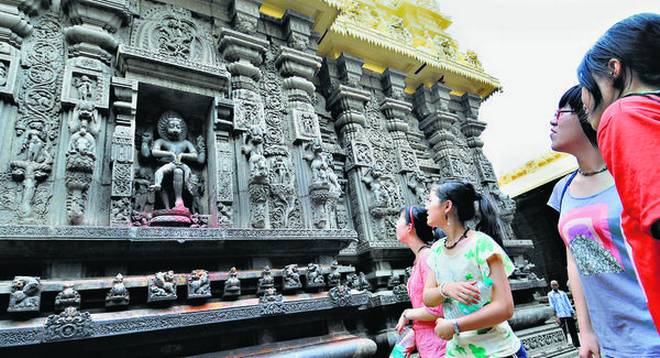Simhachalam temple near Visakhapatnam underwent renovation under various rulers and houses a plethora of sculptural motifs and intricate ornamentation on its pillars.
The view from the top is breathtaking. The Varaha Lakshmi Narasimha hill temple of Simhachalam is picturesquely located 800 feet above sea level in a small hill range of the Eastern Ghats, 15 km from Visakhapatnam. The temple’s architecture is an amalgam of Orissa and Dravidian schools, and largely influenced by various dynasties – Gangas of Odisha, Chalukyas of Vengi, Cholas of Tanjore and Kakatiyas of Warangal – who held sway over the region.
The temple, built in the 9th century, underwent several renovations under various rulers who patronised the temple, a major one having taken place in the 13th century. As many as 250 and more inscriptions on the temple walls bear testimony to this. One may either motor up to the hilltop or access the temple by a flight of 1,000 steps that begin at the foothills of Ratnagiri.
The central shrine, which rises 80 ft. high, stands on a platform that is built on a square ground plan with sides measuring 42 ft. The five-tiered pyramidal rajagopuram rises magnificently above the sanctum sanctorum which is shaped like a cuboid. The outer walls of the rajagopuram are broken into five projections, thus bearing semblance to Odisha’s Konark Temple. However, the circular apex of the tower is built in typical Vesara architectural style. The interior walls of the sanctum carry niches which are embellished with exquisite sculptures of deities in Dravidian style.
The square mukha mantapa or front porch which is built on a square ground is also a fusion of Orissan and Dravidian construction plan. Its pyramidal elevation resembles the elevation on the jaanmohana of the Sun Temple at Konark. It is held up by pillars the top of which are characteristically adorned with inverted lotus corbels.

